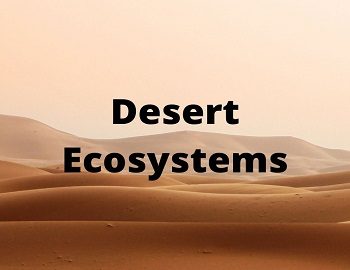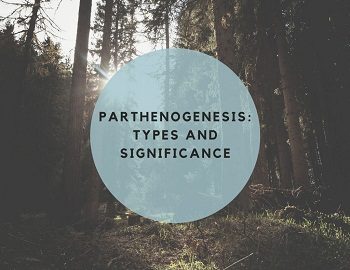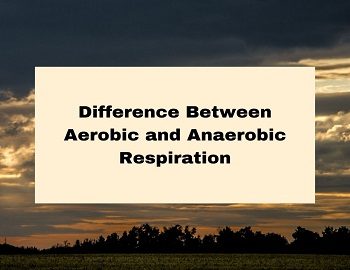Desert Ecosystems:
It is a dry sandy or rocky area with sparse vegetation due to the occurrence of little rain. Rainfall is low because the area lives in a rain shadow. This is due to being present either far away from cloud seeding area, adjacent to cold ocean currents, beyond a mountain range or without cloud intercepting mountains.
Deserts are of three major types, based on climatic conditions-
- Tropical deserts like Sahara and Namibia in Africa and Thar desert, Rajasthan, India are the driest of all with only a few species. Windblown sand dunes are very common.
- Temperate deserts like Mojave in Southern California where day time temperature are very hot in summer but cool in winters.
- Cold deserts like the Gobi desert in China has cold winters and warm summers.
In hot deserts, the day temperature often touches 50°-60°C. Nights are colder. The rate of evaporation is very high. Rains do not wet the area for long because of a high rate of run-off or percolation.
Fewer plants grow in deserts. They are of different ecological categories- ephemerals, annuals, rain perennials, succulents and non-succulent perennials. Succulent include Cacti and Euphorbias. In cold deserts, Sedum, Draba and Saxifraga occur. Non-succulent hot desert plants are Aerua, Alhagi, Capparis, Calotropis, Cyperus, Calligonum, Eragrostis, Acacia, Tamarix, Prosopis and Phoenix.
Desert animals live in burrows during hot periods. Common animals are ants, wasps, locusts, scorpions, spiders, lizards, snakes, desert rats, rabbits, hare, fox, jackal, cats, seed-eating bird quail and dove, insect-eating birds like swift and swallow, predator bird owl, scavenger bird vulture etc. Camel is adapted to desert conditions and can tolerate upto 40% desiccation. Kangaroo Rat seldom drinks water.




![Water Cycle In Nature [Hydrological Cycle] 5 water cycle in environment](https://gkscientist.com/wp-content/uploads/2020/09/water-cycle-in-environment.jpg)




Comments (No)